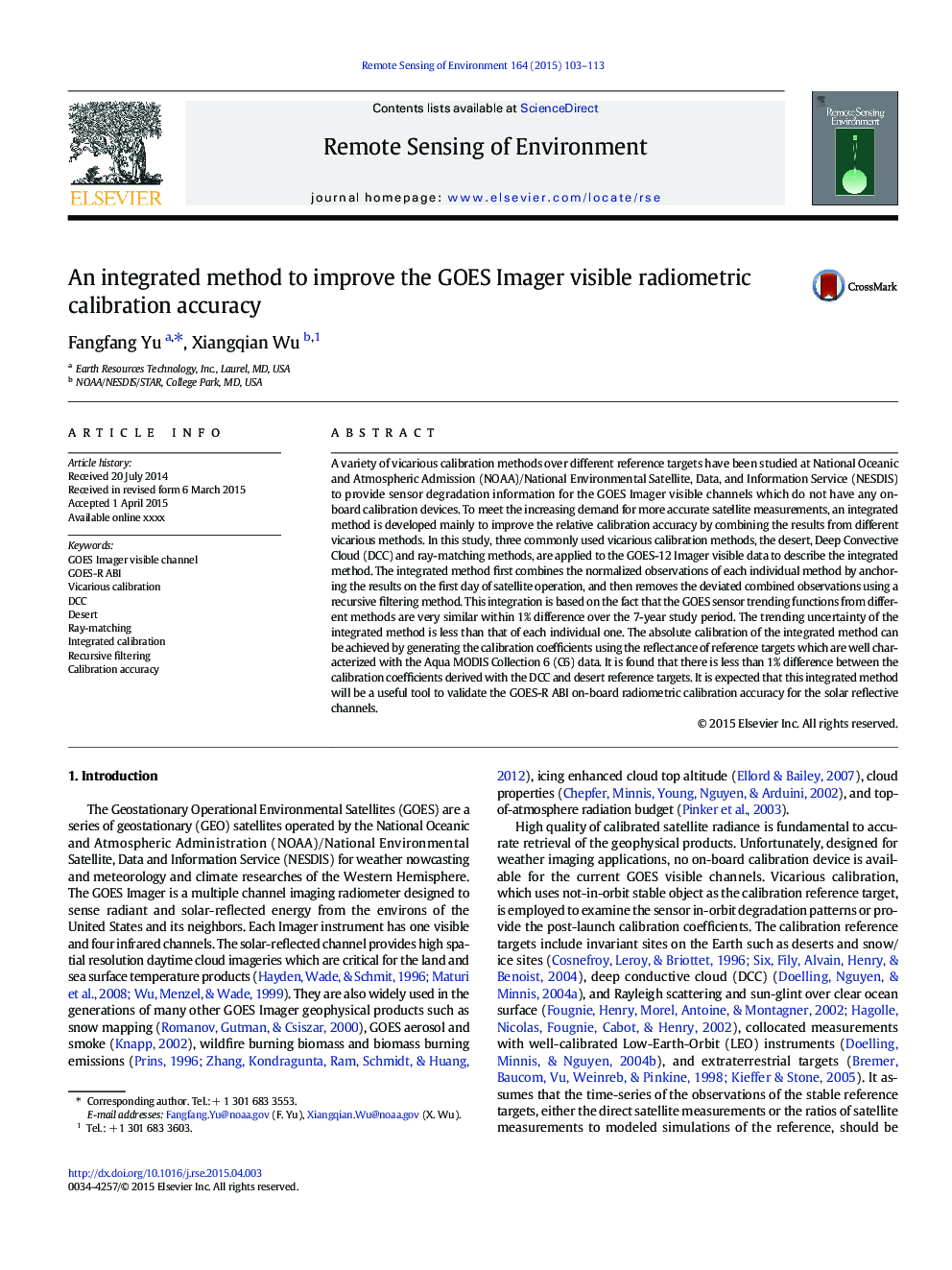| Article ID | Journal | Published Year | Pages | File Type |
|---|---|---|---|---|
| 6346014 | Remote Sensing of Environment | 2015 | 11 Pages |
Abstract
A variety of vicarious calibration methods over different reference targets have been studied at National Oceanic and Atmospheric Admission (NOAA)/National Environmental Satellite, Data, and Information Service (NESDIS) to provide sensor degradation information for the GOES Imager visible channels which do not have any on-board calibration devices. To meet the increasing demand for more accurate satellite measurements, an integrated method is developed mainly to improve the relative calibration accuracy by combining the results from different vicarious methods. In this study, three commonly used vicarious calibration methods, the desert, Deep Convective Cloud (DCC) and ray-matching methods, are applied to the GOES-12 Imager visible data to describe the integrated method. The integrated method first combines the normalized observations of each individual method by anchoring the results on the first day of satellite operation, and then removes the deviated combined observations using a recursive filtering method. This integration is based on the fact that the GOES sensor trending functions from different methods are very similar within 1% difference over the 7-year study period. The trending uncertainty of the integrated method is less than that of each individual one. The absolute calibration of the integrated method can be achieved by generating the calibration coefficients using the reflectance of reference targets which are well characterized with the Aqua MODIS Collection 6 (C6) data. It is found that there is less than 1% difference between the calibration coefficients derived with the DCC and desert reference targets. It is expected that this integrated method will be a useful tool to validate the GOES-R ABI on-board radiometric calibration accuracy for the solar reflective channels.
Related Topics
Physical Sciences and Engineering
Earth and Planetary Sciences
Computers in Earth Sciences
Authors
Fangfang Yu, Xiangqian Wu,
